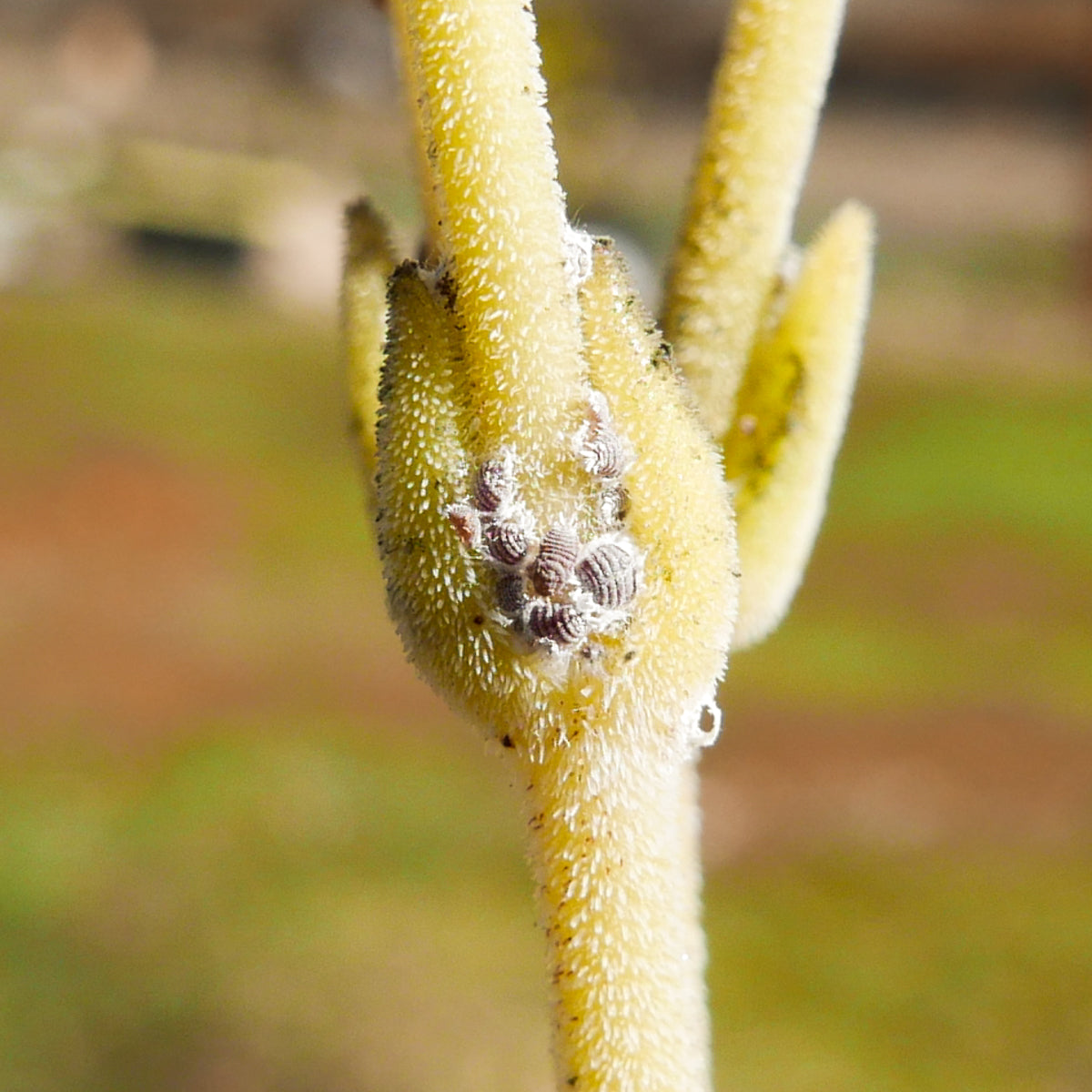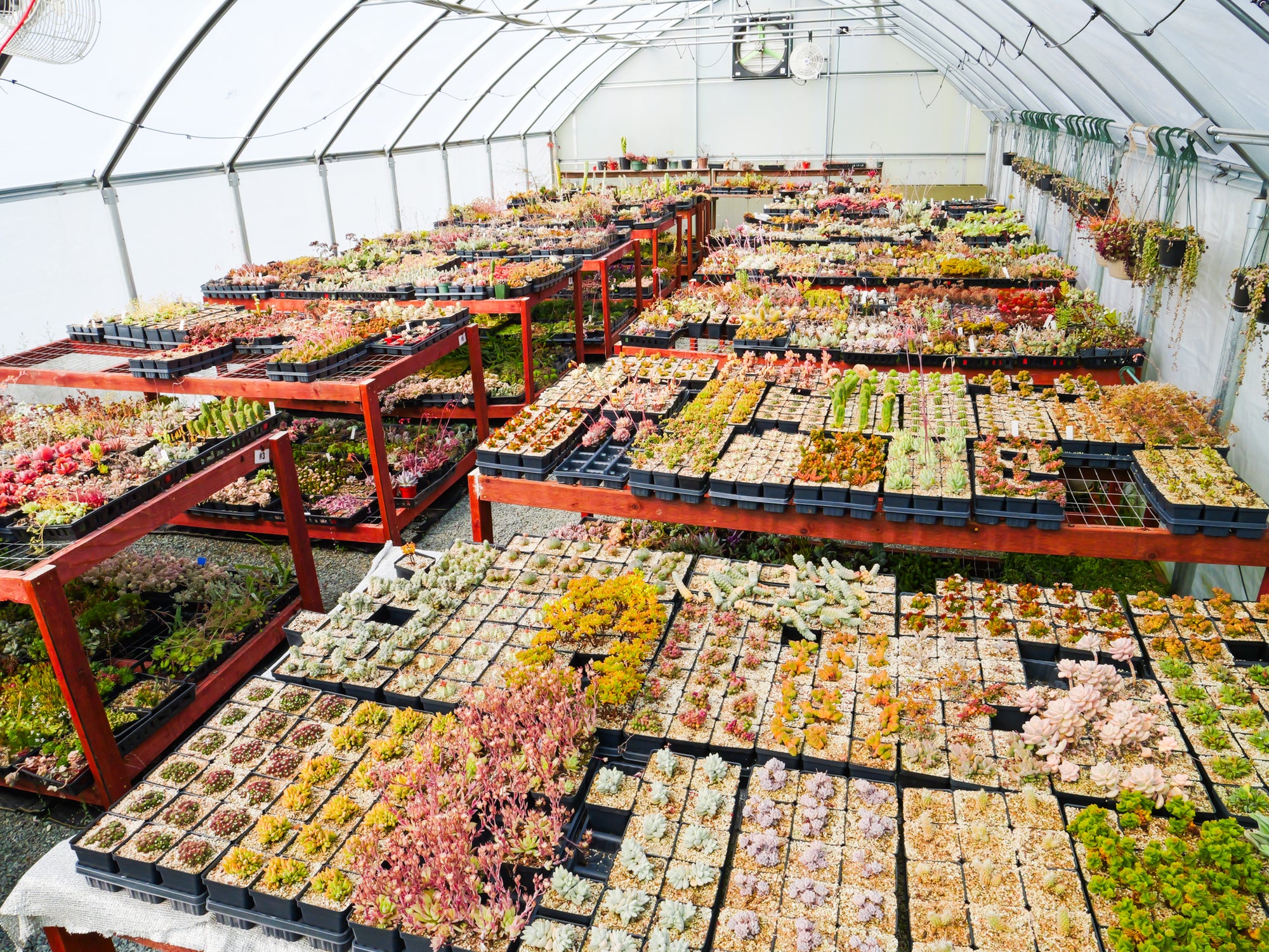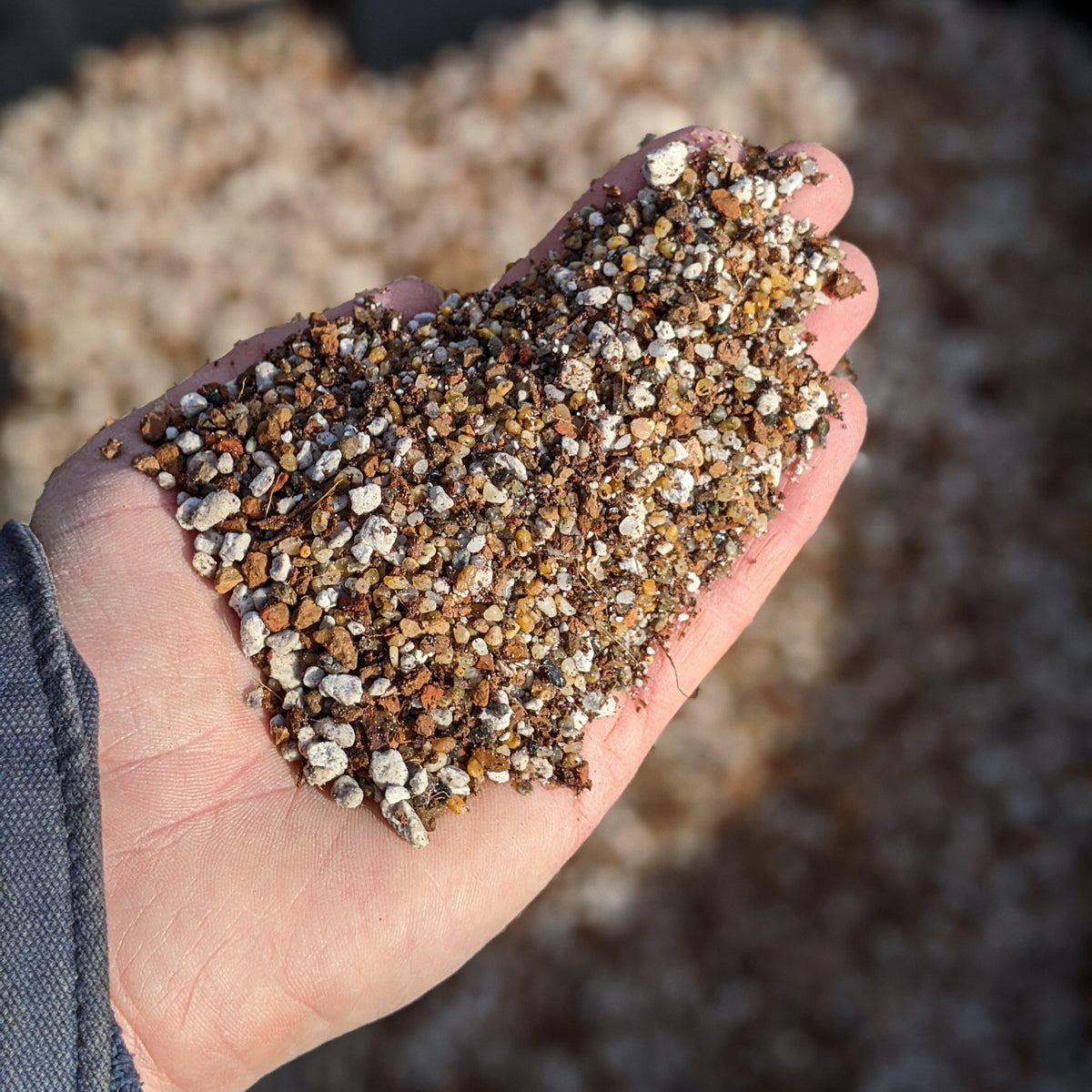Mealybugs are by far the most common succulent pest, and they can be difficult to control. Mealybugs are soft, wax covered, little insects that bite plants and suck out the juice. Thankfully, there are some effective ways to keep this pest under control.

How to spot mealybugs
Look for small white cotton-like balls in the crevices between leaves. Or, you might see the grey or yellow mealie bodies tucked in a tight spot. If you see them more out in the open, it is a sign that your infestation might already be extreme.


Plant damage
Sometimes the first sign of mealies that you will see is your plant leaves growing in a distorted way. In many succulents, like echeverias and adromischus, mealy bites on fresh new growth can cause this distortion. If you catch the problem early enough, the plant can recover. New growth after the mealies are gone will be normal. Other plants like crassulas don't get distorted leaves from mealybug bites. However any infested plant will have stunted growth, and if the infestation gets severe enough the plant will eventually die.
How to get rid of mealybugs
The waxy coating on mealybug bodies makes killing them a challenge. The first thing you should do when you spot mealybugs is kill all the ones you can find by hand. Toothpicks are my favorite tool for this, and pointy cotton swabs can also be very helpful. When you find some of that white cotton, spinning the tip of the toothpick in there collects more of it. It's a little gross, but be sure to smash all the mealies and cottony egg sacs you find. I just use my hands, and wash them after. Killing all the mealies you can see is important, but you will never find all of them this way. So the next step is to spray your plants.
After trying every spray product ever suggested, my favorite by far is horticultural oil. Neem and alcohol sprays are commonly recommended, however I find that these are less effective and tend to cause damage to the plants themselves. I have used horticultural oil on most types of succulents, and I've never had a plant damaged from it. In order to avoid leaf scarring, it is important to spray in the afternoon or evening, when the sun is no longer hitting the plants directly. This goes for any type of spray you choose.
Horticultural oil is one of the safest products you can use to fight mealies. It is not an insecticide, but instead works by physically smothering the mealies so they can't breathe. This also means that the mealies cannot build up a tolerance to it. Spray generously so that you can see the liquid collecting in/on the plant. Be sure to get all angles and as much under the leaves as you can too. If you are spraying an Echeveria, Sempervivum, or similar plant, remove any dead leaves from the base of the plant as mealies love to hide in there and the dead leaves block the spray from getting in.
Wait at least until morning before you water, so the spray has time to work. There is no need to rinse it off quickly, it will get rinsed off the next time you water. If you are spraying a plant with farina (powdery surface), the spray can sometimes make the farina splotchy. This might be cosmetically annoying but it's way better than having mealies.
Spray your plants again in a week even if you don't see the mealies anymore, to catch any more adults that were missed or babies that hatched after the spray.
Mealybug life
Most mealies are female, and they can only crawl around. This is good news, because the only way they can spread is by crawling across a surface to another plant. However, then can live on a hard surface for weeks even if no plants are there. Be sure to check your pots and other surfaces for these sneaky mealybugs.
Male mealybugs don't eat plants, but they do fly around and fertilize the females. Some types of mealybugs lay egg sacs, and those are the cottony little clusters that you see. Other types don't lay eggs and produce live babies instead.




